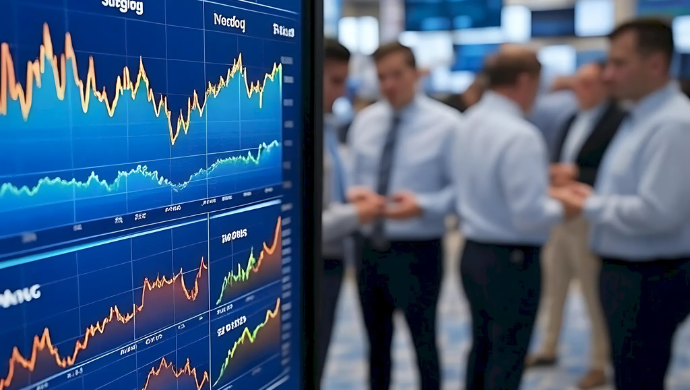
This week, major US equity indices posted gains, with the S&P 500 climbing 0.63 per cent, the Nasdaq surging 1.52 per cent, and the Dow Jones Industrial Average edging up 0.21 per cent. The upbeat mood was fuelled by better-than-expected manufacturing data, standout performances from technology companies, and growing hopes that trade tensions, particularly between the US and China, might ease.
However, the markets remain sensitive to macroeconomic developments, with bond yields ticking higher, the US dollar gaining strength, and commodities like gold and Brent crude showing mixed responses to geopolitical shifts. Meanwhile, the cryptocurrency market, led by Bitcoin, is riding this wave of risk-on sentiment, with the digital asset flirting with the US$100,000 milestone.
As investors await the US nonfarm payrolls data for April 2025, the interplay between macroeconomic signals and market dynamics remains a critical focus. Below, I unpack these developments and offer my perspective on what they mean for investors and the broader economic landscape.
The improvement in global risk sentiment this week is a refreshing change after months of volatility driven by trade war fears and policy uncertainty. The better-than-expected manufacturing data, likely from key economies like the US and parts of Europe, suggests that industrial activity is holding up despite earlier concerns about a global slowdown.
Manufacturing is a bellwether for economic health, and this data likely reassured investors that demand remains resilient, even in the face of tariff-related headwinds. The technology sector, a powerhouse of the US economy, further bolstered market confidence with strong earnings reports. Companies in the Nasdaq, which surged by 1.52 per cent, likely benefited from robust revenue growth and optimism about artificial intelligence (AI) and cloud computing.
This tech-driven rally underscores the sector’s role as a market leader, even as valuations remain stretched. However, I believe investors should remain cautious. While tech earnings are a bright spot, the sector’s high price-to-earnings ratios make it vulnerable to sudden shifts in sentiment, especially if inflationary pressures or interest rate hikes resurface.
Also Read: Market wrap: A week of cautious optimism amid shifting global sentiments
The bond market, meanwhile, sent mixed signals. The benchmark 10-year Treasury note yield rose three basis points to 4.21 per cent, and the two year note yield climbed seven basis points to 3.69 per cent. These upticks reflect a market grappling with expectations of tighter monetary policy, particularly as the Federal Reserve monitors inflation and labor market data.
Rising yields typically signal confidence in economic growth, but they also increase borrowing costs, which could weigh on equities and other risk assets over time. I view the rise in yields as a natural response to the improving economic outlook, but it’s a double-edged sword.
If yields climb too quickly, they could choke off the equity rally by making fixed-income investments more attractive. For now, the yield curve remains relatively steep, suggesting that recession fears are receding, but investors should keep a close eye on the Fed’s next moves.
The US Dollar Index’s 0.78 per cent jump to 100.25 reflects the greenback’s safe-haven appeal amid lingering uncertainties, as well as the relative strength of the US economy. However, the dollar’s strength is a headwind for US exporters and multinational corporations, which could temper earnings growth in the coming quarters.
Gold, often a beneficiary of dollar weakness, fell 2.3 per cent to a two-week low of US$3,212 per ounce. This decline surprised me, given gold’s recent run to record highs driven by central bank buying and geopolitical uncertainty. The drop may reflect profit-taking or a shift toward riskier assets like equities and cryptocurrencies, as investors bet on a more stable trade environment.
Conversely, Brent crude rebounded 1.75 per cent, buoyed by new US sanctions on Iran, which tightened global oil supply expectations. While this geopolitical move supports oil prices, it also risks reigniting inflationary pressures, a concern I’ll revisit when discussing the upcoming US jobs report.
In Asia, the Bank of Japan’s decision to hold its policy rate steady at 0.5 per cent was widely expected, but its downward revision of growth and inflation forecasts due to tariff uncertainties highlights the global ripple effects of US trade policies. Japan’s economy is heavily export-driven, and any escalation in trade tensions could exacerbate its challenges.
The closure of markets in China and Vietnam for public holidays limited trading activity in the region, but signals that China is open to trade talks with the Trump administration have boosted sentiment globally. From my perspective, these talks are a critical wildcard. While early negotiations could stabilise markets, the history of US-China trade relations suggests that progress is rarely linear. Investors should brace for volatility as details emerge.
The cryptocurrency market, particularly Bitcoin, is a standout performer in this risk-on environment. Bitcoin is trading near US$97,000, just five per cent shy of the US$100,000 milestone, with the total crypto market capitalisation climbing above US$3.13 trillion. The Crypto Fear & Greed Index’s shift to “greed” from “neutral” reflects growing bullishness among traders, a sentiment I share to an extent.
Bitcoin’s resilience amid earlier trade-related uncertainty is notable, and its recent decoupling from stock market movements suggests it’s maturing as an asset class. However, I caution that cryptocurrencies remain highly sensitive to macroeconomic events, particularly interest rates and trade policy. The positive signals from Washington about trade deals have likely contributed to Bitcoin’s rally, as reduced uncertainty encourages investment in riskier assets.
Also Read: Market wrap: A relief rally amid easing tensions and crypto resilience
Corporate adoption of Bitcoin continues to drive its narrative as a store of value. Strategy Inc., one of Bitcoin’s largest corporate holders, raised its 2025 price target for the cryptocurrency during its Q1 earnings call, signaling strong confidence in its long-term value. Similarly, MicroStrategy, the largest corporate Bitcoin holder, announced plans to increase its stash despite missing earnings expectations.
This commitment from high-profile companies underscores Bitcoin’s growing acceptance in corporate treasuries, a trend I view as a structural tailwind for the asset. Tokyo-based Metaplanet’s issuance of 3.6 billion yen (US$24.8 million) in bonds to fund additional Bitcoin purchases further illustrates this trend.
Holding over 5,000 BTC, Metaplanet is positioning itself as Asia’s answer to MicroStrategy, leveraging Bitcoin to enhance shareholder value. While I admire the boldness of these strategies, I worry about the risks of such concentrated exposure, especially if Bitcoin’s price faces a sharp correction.
The upcoming US nonfarm payrolls report for April 2025 is the next major catalyst for markets. A strong jobs number could reinforce expectations of a robust US economy, potentially pushing Treasury yields higher and strengthening the dollar further. However, it might also reduce the likelihood of near-term Federal Reserve rate cuts, which could temper enthusiasm for equities and cryptocurrencies.
Conversely, a weaker-than-expected report could reignite hopes for monetary easing, boosting risk assets like Bitcoin and tech stocks. My base case is that the jobs report will show moderate growth, reflecting a labor market that is cooling but not collapsing. This scenario would likely support the current risk-on sentiment without triggering a hawkish Fed response. However, given the Fed’s data-dependent stance, any surprises could lead to sharp market reactions.
Also Read: Market wrap: A pivotal moment for gold, Bitcoin, and global markets
Looking ahead, I believe the interplay between trade policy, monetary policy, and corporate earnings will define the market’s trajectory in 2025. The optimism surrounding trade negotiations is encouraging, but the devil is in the details. A meaningful de-escalation of tariffs could unlock significant upside for global equities and commodities, but entrenched geopolitical rivalries make this outcome uncertain.
The Federal Reserve’s path is equally critical. With inflation still above target and the labor market showing resilience, the Fed may adopt a cautious approach to rate cuts, keeping yields elevated and testing the equity market’s valuations. For cryptocurrencies, the combination of institutional adoption and macroeconomic tailwinds is bullish, but volatility is a given in this nascent asset class.
In conclusion, the current market rally reflects a potent mix of economic resilience, corporate strength, and policy optimism. However, investors must navigate a complex landscape of rising yields, dollar strength, and geopolitical risks. While I’m cautiously optimistic about the near-term outlook, I urge vigilance.
The nonfarm payrolls report will provide fresh clues, but the broader story is one of opportunity tempered by uncertainty. For now, the markets are riding a wave of hope, but staying grounded in data and fundamentals will be key to sustaining this momentum.
—
Editor’s note: e27 aims to foster thought leadership by publishing views from the community. Share your opinion by submitting an article, video, podcast, or infographic.
Join us on Instagram, Facebook, X, and LinkedIn to stay connected.
We’re building the most useful WA community for founders and enablers. Join here and be part of it.
Image courtesy of the author.
The post Bitcoin, S&P 500, Nasdaq surge amid strong manufacturing data and trade hopes appeared first on e27.










